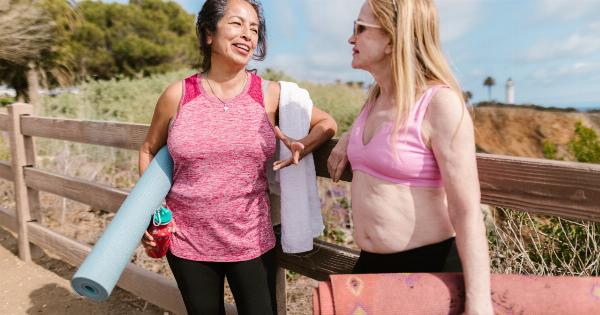Summer is here and with it comes days spent at the beach, pool, or park. One essential item for outdoor activities is sunscreen. However, using it correctly is vital to keep the skin safe from sun damage.
Here are 30 mistakes that people might be making with their sunscreen that will end up leaving them with burns.
1. Not Using Enough
One of the most common mistakes people make is applying too little sunscreen. The recommended amount is about one ounce, which is enough to fill a shot glass. Remember that the skin can absorb more than you think.
2. Skipping Reapplication
Reapplication is key when it comes to using sunscreen. Even if the product is waterproof or sweat-proof, it still needs to be reapplied every two hours.
Chemical reactions with the sun can reduce the effectiveness of the sunscreen, making it less effective over time.
3. Not Waiting for Absorption
After applying sunscreen, it needs time to absorb before going outside. Waiting around 20 minutes will allow the sunscreen to form a protective barrier on the skin. Otherwise, it can easily rub off or not work correctly.
4. Only Applying on Exposed Skin
Sunscreen should be applied on any exposed skin. Many people forget to put it on their ears, hands, and feet. Others apply it to their faces but forget the neck or décolletage. Any part of the skin exposed to the sun is susceptible to damage.
5. Not Choosing the Right SPF
SPF stands for Sun Protection Factor, which measures how well a product will protect the skin from UVB rays. Many people choose a low SPF because they want to get a tan or believe that higher SPFs are unnecessary.
However, dermatologists recommend using at least SPF 30 and often as high as SPF 50.
6. Using Expired Sunscreen
Sunscreen has an expiration date, and using it beyond that date can make it less effective. Expired sunscreen can cause irritation or allergic reactions and may not protect the skin from UV rays.
Always check the expiration date before applying sunscreen.
7. Applying Sunscreen Over Dirty Skin
If sunscreen is applied over dirty skin, it can block the pores and cause breakouts. Make sure to clean the skin before applying sunscreen for maximum effectiveness.
8. Assuming That a Cloudy Day Means No Sun
Many people think that cloudy days mean that the sun is not intense enough to cause harm. However, UV rays can penetrate through clouds and cause sun damage. Always wear sunscreen, even on a cloudy day.
9. Not Using Sunscreen Indoors
UV rays from indoor lighting or electronic devices can cause skin damage. People who work in areas with a lot of fluorescent lights or who spend a lot of time in front of screens should wear sunscreen indoors to protect their skin.
10. Not Using Sunscreen on Different Skin Types
Not all skin types are the same, and using the same sunscreen for everyone can cause issues. Those with oily skin may need a lighter moisturizer, while those with dry skin may need one that is more hydrating.
Choose the right sunscreen for your skin type and use other products that complement it best.
11. Not Using Sunscreen on Children
Children’s skin is more sensitive and prone to sun damage. Not using sunscreen or other protection can put them at risk of sunburns and skin cancer. Make sure to use a child-safe sunscreen with high SPF and protect children from the sun.
12. Not Testing a New Sunscreen
Some people have sensitive skin that can react to new products. Testing a small amount on the skin before use can prevent an allergic reaction.
13. Not Applying Sunscreen Before Swimming
Water can remove sunscreen from the skin, so applying it before swimming can provide protection. Use a water-resistant product if swimming or sweating.
14. Relying on Makeup Products for Sun Protection
Makeup products with added SPF are not enough to provide complete protection against the sun. They should not replace traditional sunscreen. Use a dedicated sunscreen even when wearing makeup.
15. Not Using Different Sunscreens for Different Occasions
Sunscreen for everyday use might not be sufficient for outdoor activities. Use a water and sweat-proof product when going to the beach, pool, or spending extended periods outdoors.
16. Not Using Sunscreen on Bald Spots
Bald heads are as susceptible to sun damage as any other part of the skin. Applying sunscreen or wearing a hat is crucial to prevent burns on bald spots.
17. Not Applying Sunscreen During High Risk Periods
The sun’s rays are strongest between 10 am and 4 pm. Applying sunscreen during these hours is vital to prevent sun damage.
18. Not Understanding Water Resistance of Sunscreen
Water resistance is not the same as waterproof. Sunscreen labeled water-resistant needs to be reapplied every 40-80 minutes, depending on the type of activity. Any sunscreen can lose its effectiveness when exposed to water or sweat.
Make sure to follow the instructions when using water-resistant sunscreen.
19. Not Protecting the Eyes
The skin around the eyes is thin and prone to damage from the sun’s rays. Wearing sunglasses and applying sunscreen or an eye cream with SPF protection can help protect the skin around the eyes.
20. Not Using Sunscreen on Snowy Days
Snow is highly reflective and can increase the sun’s intensity. People who are skiing, snowboarding, or sledding should use sunscreen to prevent sunburns.
21. Not Moisturizing After Sun Exposure
Sun exposure can dry out the skin and cause damage. Using a moisturizer after sun exposure can soothe the skin and prevent peeling.
22. Not Reading the Ingredients List
Sunscreen ingredients can cause an allergic reaction or irritation in some people. Reading the ingredients list before buying a sunscreen can help prevent these issues.
23. Not Using Sunscreen When Using Retinol or AHAs
Retinol and AHAs can increase sun sensitivity, making the skin more prone to sun damage. Applying sunscreen when using these products can prevent burns and other skin issues.
24. Not Applying Sunscreen Under Clothes
Clothes do not provide complete protection against the sun. Wearing sunscreen under clothes can prevent sunburns and skin damage.
25. Not Using Sunscreen While Under a Shade
Being under a shade or umbrella can provide some protection against the sun’s rays. However, UV rays can reflect off surfaces and reach the skin. Wear sunscreen even when under a shade or umbrella.
26. Not Applying Sunscreen on Tattoos
Tattoos can fade or become damaged by sun exposure. Applying sunscreen can prevent these issues and protect the ink.
27. Not Using Sunscreen During Cloudy Cold Days
Cloudy and cold days can still be harmful to the skin. UV rays can penetrate through clouds and cause damage. Even when it is cold outside, it is still important to wear sunscreen.
28. Not Using Sunscreen on the Lips
The lips are often forgotten when it comes to sun protection. Sunburned lips can be painful and unsightly. Using a lip balm with SPF protection can help prevent burns and keep lips moisturized.
29. Not Using Waterproof Sunscreen When Wearing Contact Lenses
Waterproof sunscreen is essential when wearing contact lenses. Sunscreen that is not waterproof can cause irritation or infection in the eyes.
30. Not Using Sunscreen Every Day
Using sunscreen only on sunny days or when doing outdoor activities is not enough to prevent sun damage. UV rays can harm the skin even on cloudy days or through windows.
Use sunscreen every day, even if staying indoors, to protect the skin from harmful rays.






























